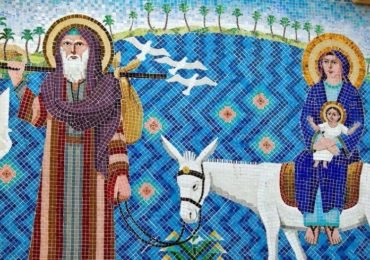Cairo’s Church of the Saint Virgin Mary was built on the ruins of the Roman Babylon Fortress. Because of its location over the ruins of the fortress, it is known as Al Mo’llaqah Chruch or the “Hanging Chruch.” Because of the staircase that leads to the church’s gate, western visitors referred to it as the “Church of the Staircase” during the Middle Ages. Or the Church of the Pillar, which refers to the Al Moqattam Mountain Movement miracle by the faith of Simon the Tanner. Patriarch “Abraham Bin Zara’a” fasts in the church for three days and three nights. On the third day, the Virgin Mary appeared to him, very close to one of the church’s pillars, and told him what he should do.
The Hanging Church is located just before the Metro Station of “Mary Girgis” nearby the famous Coptic Museum and the Abu Serga Church. It is situated above the ruins of Babylon Fortress in Cairo, indicating that it was constructed after the Arab conquest of Egypt in 639 AD. Though an earlier church building may have elsewhere existed dating as early as the 3rd or 4th century. However, the earliest mention of the church was a statement in the biography of the patriarch Joseph I (831–849), when the governor of Egypt visited the establishment.

Christianity is the second-largest religion in Egypt. The church was designed after the basilica model, with a nave, niche, and side isles leading to side rooms. Hanging Church is dedicated to the Virgin Mary and contains sanctuaries to her and Saints John the Baptist and George. A smaller church was built to the south of the Hanging Church, which was linked by a colonnade. In 1100 AD, another floor was added to the small church to serve as the patriarch’s seat.

From the time of “Abraham Bin Zara’a” in 969 until 1300 AD, the Hanging Church served as the Patriarch’s seat and residence which was in Alexandria. Between the 11th and 14th centuries AD, the church played a very important role in the life of Egyptian churches, when it was the location for the election of the new Patriarch, and it was also the location for their burial.
Throughout its history, the Hanging Church has been subjected to robberies and damage, so it has undergone some restoration, erasing much of the evidence of the church’s origin. The most extensive restoration took place in the nineteenth century AD. The church’s extreme left side was rebuilt. There is now a new open court. The nave was expanded to include four isles. The colonnade leading to the smaller church was demolished. It was converted into a side church that bears the name of the Ethiopian Patriarch “Takla Henmout” who lived in the 13th century Ad. As well as the 1992 earthquake did a lot of damage.

The marble pulpit, the wooden niche, and the 110 church icons depicting important Christian events are among the valuable items in the Hanging Church. The oldest of them dates back to the 8th century, but most of them date to the 18th century. The very famous icon is known as the Egyptian Monalisa. Some other objects from the Hanging Church went to the nearby Coptic Museum.

